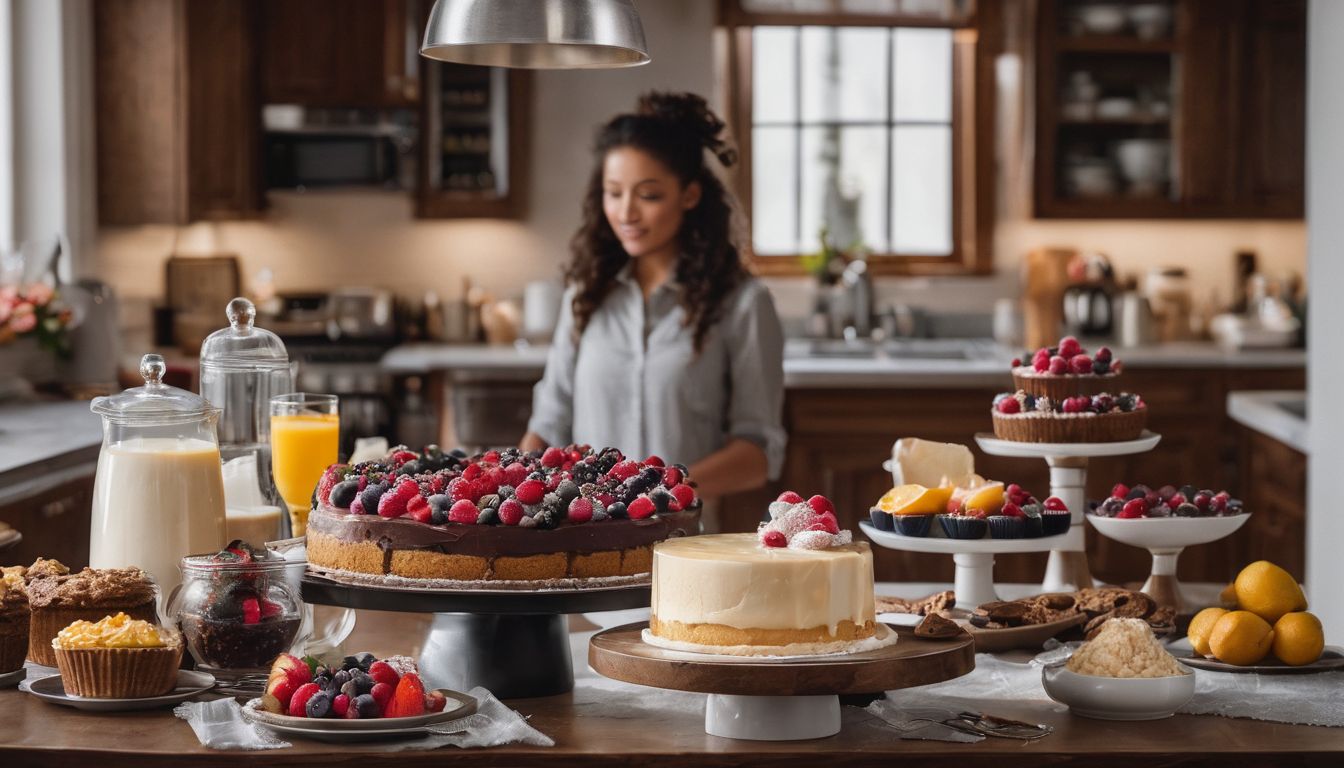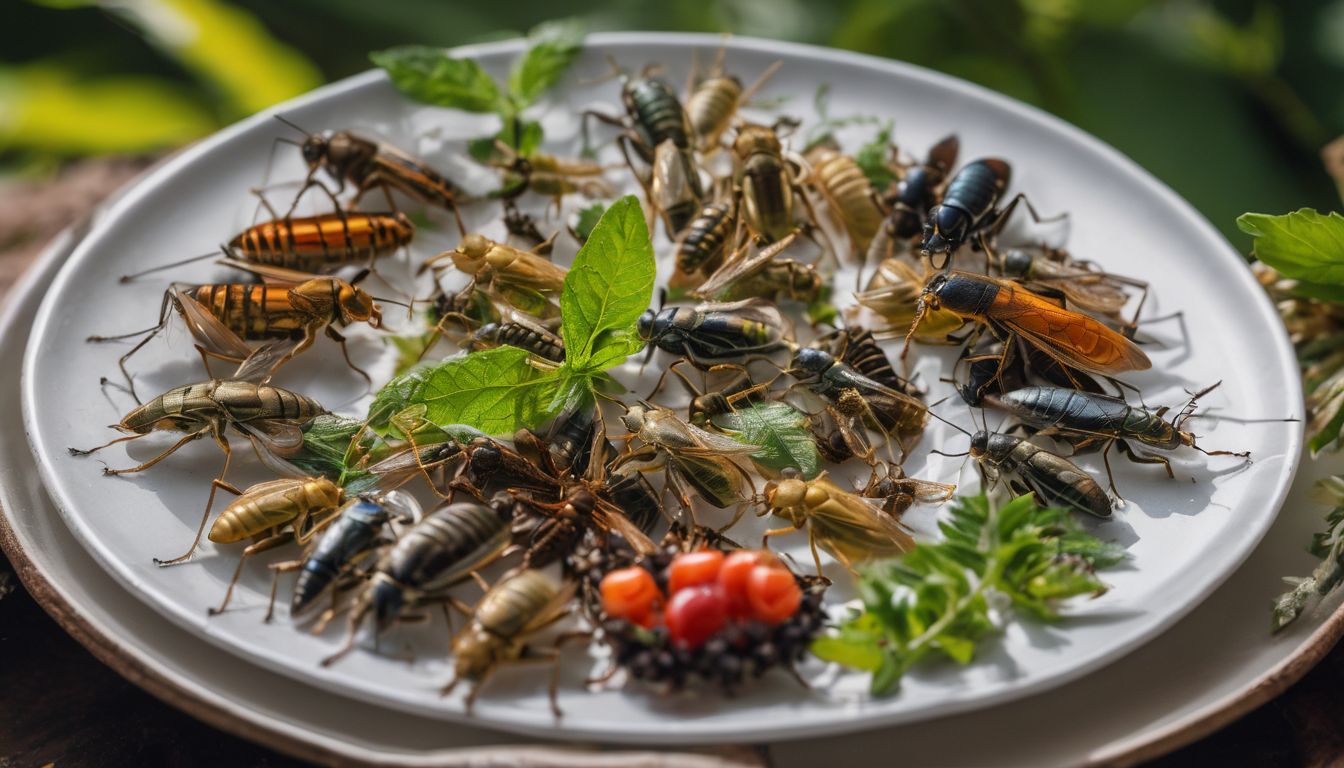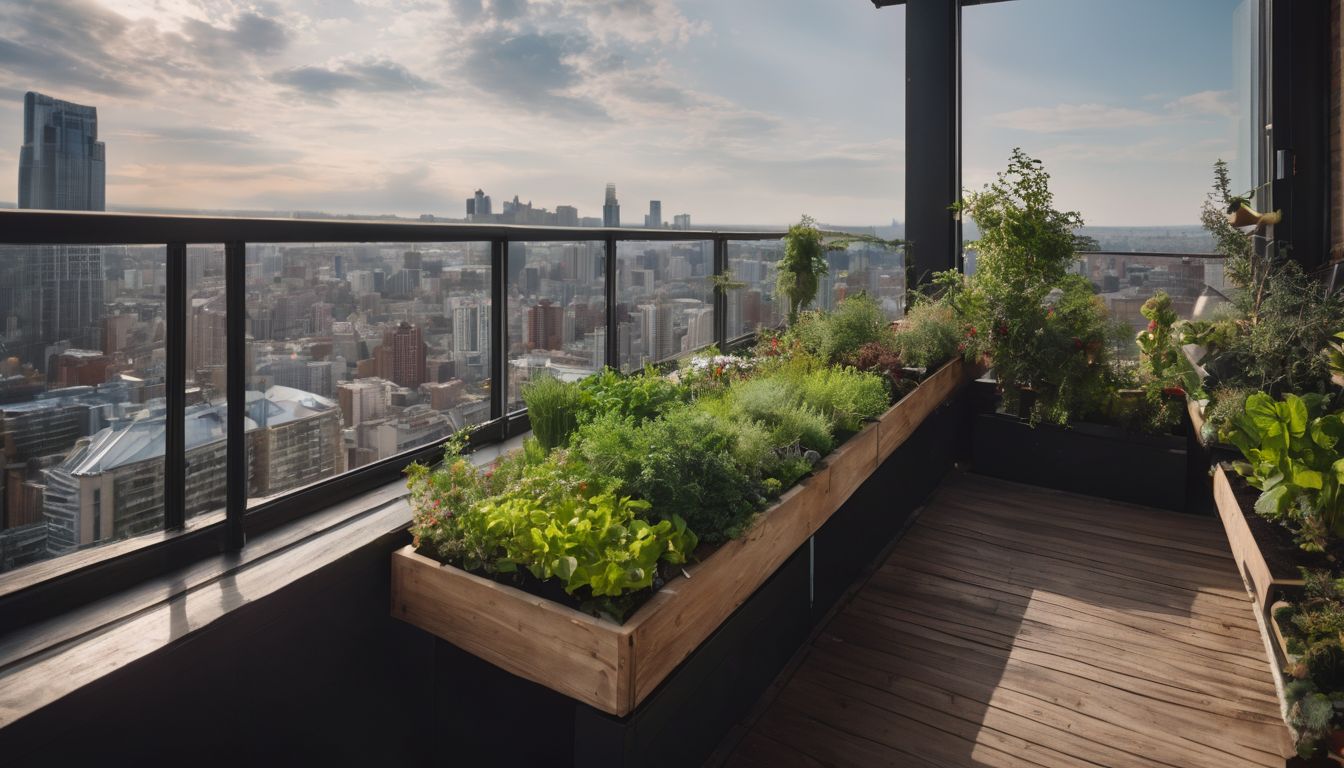Ever hear that you shouldn’t scratch your pan? Ever wonder why your grandmother’s pan lasted for centuries, and why yours only lasted a few years? When it comes to cooking and baking tools, we have more options than the big-box stores would like us to know about. Let’s talk about Sustainable Cookware and Bakeware—how to properly use and clean your tools so that they last you a lifetime!
BENEFITS FOR THE ENVIRONMENT: Replacing your pans every few years isn’t sustainable. Neither is polluting the environment with PFOA. Fortunately there are alternatives.
BENEFITS FOR YOUR HEALTH: Do you want iron in your diet? Probably. Do you want nickel? Not if you have a nickel allergy. Do you want inert plastic? Definitely not—but there’s a good chance that you’re getting it if you’re using Teflon like most Americans do. Knowing what cookware is made of and how to use it will give you the power to decide what goes in your body and what stays out.
Time and Effort: Moderate. Researching which cookware is best for you might take considerable time and effort. However, it should—this is a decision that affects your every meal.
Cost: Moderate. Learning how to properly cook in the pots and pans you already have won’t cost you a penny. However, buying a new cast iron pan or stainless steel pot will put a dent in your wallet—fortunately it should pay off in the long run.
Cookware and Bakeware Options on the Market:
Aluminum is the most abundant metal found in the Earth’s crust. More than half of all cookware sold today is made of aluminum because the metal is cheap, quick-heating, and lightweight. But the metal is also highly reactive. Foods cooked in aluminum may react with it to form aluminum salts, which might be associated with Alzheimer’s disease. Aluminum is not an essential mineral.
Cooking tips: Don’t cook highly acidic foods (tomato sauce, rhubarb, sauerkraut) in aluminum. Don’t use sharp tools in combination with aluminum cookware. For example, don’t cut a brownie in an aluminum pan with a knife. The more pitted and worn your pot or pan, the more aluminum your food will absorb. Don’t store food in aluminum at length. Consider lining your baking sheets with chlorine-free parchment paper or a reusable silicone baking mat to further reduce your aluminum intake.
Cleaning tips: Use a warm soapy dishcloth to remove all grease and burnt-on food. To get rid of stains, boil a quart of water with three tablespoons of lemon juice or vinegar in your aluminum cookware for 10 to 15 minutes, then rinse with warm water. To prevent pitting (the formation of small holes in your cookware), bring water to a boil before adding salt. Wipe your cookware dry to avoid unsightly water marks. Aluminum is NOT dishwasher safe.
Anodized aluminum is aluminum that has been placed in an acid solution and exposed to an electric current, depositing a layer of aluminum oxide on the surface of the aluminum. According to Health Canada, “Anodized aluminum cookware conducts heat as well as ordinary aluminum, but has a hard, non- stick surface which makes it scratch-resistant, durable, and easy to clean. Anodization also reduces leaching of aluminum from cookware into foods, particularly acidic foods like tomatoes and rhubarb.”
Cast iron has been used for cooking for hundreds of years. Ask your grandmother—she most likely grew up with a cast iron pan or dutch oven. In fact, your grandmother probably still has the pan, since cast iron is so bulky and durable that it lasts several lifetimes. Like stainless steel and aluminum cookware, cast iron vessels do leech metals, but they leech a good metal—iron. As noted above, iron is an essential nutrient that many Americans lack. Women, especially those who are pregnant, lactating, or menstruating, benefit most from increased iron consumption. Cast iron cookware heats evenly, but it also requires more time and energy to heat up. When seasoned properly, cast iron does not stick to foods, and its non-stick properties improve over time.
Seasoning instructions: Before cooking with your new cast iron pan or pot, you must season it (even if the label claims that it’s already pre-seasoned). Wash it in warm, soapy water. If you’re dealing with an old rusty pan that you’re bringing back to life, scrub away the rust with an abrasive. Apply a thin, even coating of vegetable oil (not butter). Cover everything, including the lid. Preheat the oven to about 350 degrees Fahrenheit. Place the cast iron cookware on the top shelf and a large baking pan on the bottom shelf to catch any excess oil. Bake the cast iron for about an hour, then let it cool in the oven. You may have to repeat this process a few more times, depending on the condition of your cast iron.
Cooking tips: Heat your cast iron pan. Drop a teaspoon of water into the pan. If the water jumps and then evaporates, your pan is hot enough to cook on. Add oil, turning the pan in a circular motion to evenly coat the bottom and sides. You may use sharp tools, such as a stainless steel spatula, in combination with the cast iron. If your food sticks to the pan, season the pan again. Cast iron isn’t just for the stove top. You can use it to bake muffins, cakes, and breads. Dutch ovens are perfect for cooking outside on hot coals. Find out more on how to use them here: cowboyshowcase.com/dutch_oven_cooking.htm.
Cleaning tips: Do not use soap unless you are about to re-season your cast iron cookware. To prevent rust, rinse with water, wipe immediately, and store the cookware with its lid off. Cast iron is NOT dishwasher safe.
Ceramic pottery was first used for food storage about 12,000 years ago. Ceramics include glass, clay, porcelain, stoneware, and earthenware. Compared to other cookware, ceramics have a small environmental footprint during the manufacturing process. Ceramic vessels heat up slowly, but they generously share their heat with the food, making them perfect for casseroles and baked goods. When made from the right materials, ceramics are non-reactive, non-toxic, and don’t absorb odors. Although ceramics are largely comprised of earthy materials (sand or clay), they may also contain additives or glazes that pose health concerns. When purchasing pottery, look for a label that indicates the product is lead and cadmium-free. Be wary of buying pottery abroad, as some countries do not monitor lead and cadmium levels.
Cooking tips: To avoid cracking, do not use ceramics on the stove top. Ceramics do not withstand abrupt temperature changes. Place the ceramic vessel in a cold oven and heat slowly. Once food is cooked, leave the vessel in the oven to cool gradually. You can also use ceramics to store food in the refrigerator for an extended time or to heat foods in the microwave. Remember that ceramics are multi-functional—pizza stones aren’t only great for pizzas, they are also perfect for cookies and pastries!
Cleaning tips: Ceramics soak up everything, including detergents, so skip the soap. Soak in water or apply white vinegar to remove baked-on food. Many ceramics are NOT dishwasher safe.
Stainless steel is a mixture of metals (including iron, chromium, and nickel) that resists corrosion, but doesn’t conduct heat as well as aluminum or copper. It’s durable, easy to clean, and it resists scratches. Like aluminum, stainless steel can leech metals in small amounts.
- Chromium is considered by some to be an essential nutrient. It’s good for your health at about 50 to 200 micrograms per day. To compare, one meal prepared with stainless steel equipment gives you about 45 micrograms of chromium.
- Nickel is not poisonous in small quantities, but it can provoke a reaction in people allergic to nickel. Those that are allergic should avoid stainless steel. Nickel is not considered an essential nutrient.
- Iron is an essential nutrient that helps produce red blood cells. Most Americans lack iron in their diet, so using iron cookware can improve health. Many foods, including spinach, beef, beans, and salmon also contain iron.
Cooking tips: Stainless steel is resistant to sticking only when it has been preheated to high temperatures. Heat your stainless steel pan for approximately five minutes. Drop a teaspoon of water into the pan. If the water jumps and then evaporates, your pan is hot enough to cook on. Add oil, turning the pan in a circular motion to evenly coat the bottom and sides.
Cleaning tips: To prevent leeching, don’t use abrasive products such as steel wool or bleach. Use a hot soapy dishcloth instead . To prevent pitting, bring water to a boil before adding salt. Wipe your cookware dry to minimize unsightly water marks . Stainless steel IS dishwasher safe .
Silicone is a synthetic rubber that contains bonded silicone (which is found in sand and rock) and oxygen. Silicone is “colorful, nonstick, stain-resistant, hard-wearing, cools quickly, and tolerates extremes of temperature.” It’s non-reactive and produces no hazardous fumes … at least not that we know of. Silicone became popular in recent years, and its long-term effects are still unknown. The FDA has deemed food-grade silicone safe, yet cheaper brands add bulk fillers that aren’t necessarily safe. If your silicone turns white when you pinch and twist a flat area of it, it has fillers. Silicone cookware comes in many forms, from spatulas to muffin pans, but perhaps the most useful is the reusable Silpat sheet, which can replace disposable parchment paper in many instances.
Cooking tips: Do not use silicone cookware at temperatures above 428°F because it will melt. Use it in the oven, freezer, or microwave, but not on the stove top. Skip the grease—your cakes will slide out easily without oil. Since silicone is flexible, you may want to place a baking sheet underneath it.
Cleaning tips: Avoid abrasive materials. Do not soak in soapy water because the silicone will absorb the soap. Wash with a warm dishcloth. Dry completely to prevent bacterial growth. Silicone IS dishwasher safe but is best cleaned by hand.
Copper heats quickly and evenly, which is why chefs favor it for sauces and sautés. It’s beautiful and indestructible. Like cast iron, it will last several lifetimes if cared for properly. Copper is an essential nutrient but it’s also toxic in high doses. According to Health Canada, “It is not certain how much can be safely taken each day.” On the one hand, mammals excrete excess copper efficiently; on the other hand, chronic copper toxicity can damage the kidney and livers. That’s why Health Canada advises against cooking foods—especially acidic meals—on bare copper. Today, most copper pans are coated with nickel, tin or stainless steel to prevent copper from leeching into acidic foods. Health Canada also advises against cooking on nickel and tin.
Nickel lining—As mentioned above, nickel is not an essential mineral. It can provoke an allergic reaction in some people.
Stainless steel lining—Treat the lining as you would a stainless steel pot (discussed previously). Note: unlike stainless steel, copper is NOT dishwasher safe.
Tin lining—Tin is an essential element for some animals, but researchers still don’t know if it’s essential for humans. We humans have been using tin to make household goods since the Bronze Age! Too much tin can cause nausea, abdominal pain, and vomiting. The body quickly excretes excess tin (unlike things like PFOA) and does not suffer long-term damage from it. Uncoated tin cookware is no longer sold, and Health Canada advises using older tin for decorative purposes only. Tin scratches easily, but there are professionals who can extend your pan’s lifetime by re-tinning your copper cookware.
Cooking tips: Don’t store acidic foods in tin for any long periods of time. Do not use sharp tools such as knives or metal spatulas in combination with the tin lining. Use wooden tools instead.
Cleaning tips: Use a warm soapy dishcloth. Avoid abrasives such as steel wool. All copper pans, regardless of lining, are NOT dishwasher safe.
Warning: If you are purchasing a new copper pan, heed this warning: “Often (depending on the manufacturer) copper cookware is shipped with a thin protective seal, a lacquer that first needs to be removed before using the cookware. This lacquer merely serves the purpose of maintaining a clean surface whilst the cookware is in storage. Lacquer is very easy to remove with a little acetone. It is imperative to remove this lacquer; otherwise it will burn and turn the pot black. Once this has happened, it is almost impossible to clean.”
Bamboo is a fast-growing, renewable resource that’s non-reactive. No, you can’t buy a bamboo pot or pan, but you can invest in a bamboo steamer.
Clooking tips: Boiling food allows good nutrients to escape, so cook your veggies, rice, or chicken in a bamboo steamer instead. Layer each section of your steamer with parchment paper or lettuce leaves, placing food on top. Place the steamer in a deep pan or wok and fill the pan until it reaches the steamer’s bottom rim. Heat the pan to boil the water, then steam for as long as your recipe requires.
Cleaning tips: Remove the lids and parchment paper or lettuce leaves. Bamboo is NOT dishwasher safe.
Teflon and Silverstone are non-stick finishes that scratch easily. They leech bits of inert plastic into your food when cooked and release toxic fumes over high heat. According to an Environmental Protection Agency (EPA) study, PFOA (a chemical used in the manufacture of Teflon pans) is likely to cause cancer in rats . The chemical has spread throughout the natural environment worldwide. In 2006 researchers at Johns Hopkins University found PFOA in umbilical cord blood in 99% of 300 newborns tested. That same year, “the chemical industry voluntarily agreed to a U.S. EPA plan to reduce and eventually eliminate the release of PFOA into the environment and to reduce and eliminate any PFOA content in products,” but the chemical is yet to be eliminated from all products.
Cooking tips: Do not use sharp tools, such as knives or metal spatulas, in combination with your non-stick cookware. Use wooden tools instead. Only cook foods at low heat. When done cooking, remove pan from stove to prevent overheating. Teflon off-gases toxins at 446°F or 325°F, depending on which study you read. At 680°F the pans release at least six toxic gases, including two carcinogens. Note that a pan often surpasses 500°F when frying bacon or pre-heating to make pancakes. Do not cook in the vicinity of pet birds, as the fumes can be fatal to birds.
Cleaning tips: Use a warm soapy dishcloth to remove all grease and burnt-on food. Don’t use abrasives such as steel wool. Non-stick coatings are NOT dishwasher safe.
Avoid Plastic! Plastic is made of petroleum and should not be placed anywhere near stoves or ovens, and microwave should be minimized. The 2010 report by the President’s Cancer Panel advises consumers to microwave food and beverages “in ceramic or glass instead of plastic containers” to “reduce exposure to endocrine-disrupting chemicals that may leach into food when containers are heated.” Note: many pots and pans have plastic handles that may emit toxic fumes when heated. Choose cookware with glass or ceramic handles, which are oven-safe and (unlike steel or cast iron) stay cool on the stove-top.
So, what should you use? There is more than one correct answer! You might try out a silicone baking pan because silicone products show no adverse health effects, or you might strictly adhere to the precautionary principle and reword that last phrase to: Silicone products show no adverse health effects… that we know of… yet. I wouldn’t recommend buying Teflon—the pans only last for a short period of time and their chemicals contaminate the environment and your body. But if you already have a Teflon pan, you might decide to gently cook with it (on low heat, without abrasives) instead of investing in a new pan. My personal recommendations are:
Need to have: Cast iron pan and skillet, stainless steel pot, ceramic baking pan, pizza stone.
Nice to have: Dutch oven, bamboo steamer, copper pan lined with stainless steel, cast iron muffin pan, and the adorable cast iron cornbread pan ☺
Whatever cookware you choose, maintain it well. Still using Teflon? Don’t scratch it, and don’t stack Teflon pans one atop another. Giving your grandmother’s cast iron pan a go? Take the time to season it first. Get cooking, and experiment with what works best for you!




